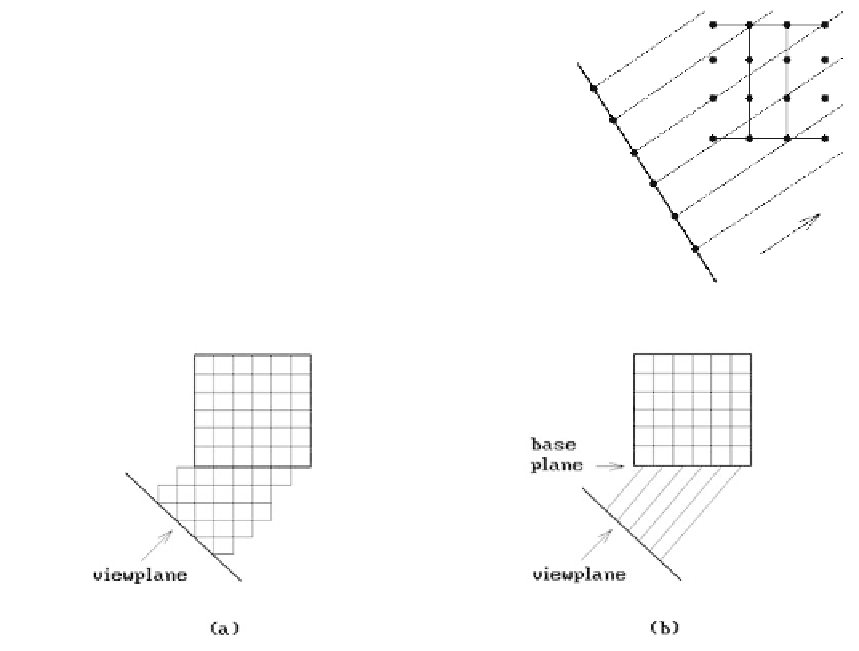Graphics Reference
In-Depth Information
Figure 10.13.
Image precision rays for volume
rendering.
Figure 10.14.
Image plane versus base plane ray casting.
has the option of starting these rays at the view plane or at a base plane of the voxel
volume. See Figure 10.14. In the former case one may miss some voxels and in the
latter case we do not, but we may get some warping, which requires some resampling
to map the result back to the view plane. Given density values along the ray we then
have to decide how to use these values to get a value for the pixel to which they project.
This is the compositing problem that we consider shortly.
Object Precision Volume Rendering.
In this approach we project to the view plane
along rays starting at voxels in the view volume. See Figure 10.15. Since voxels do not
necessarily project to pixels in the view plane, we can see that there are some poten-
tial problems that have to be handled. As far as assigning a density value to a pixel,
we can do that based on a weighting of the values of voxels that map to a neighbor-
hood of the pixel. To overcome holes we can use a technique called
splatting
(see
[West90]), which distributes values of a voxel over a region around the point in the
view plane to which the voxel projects. Another problem one has to deal with is gaps
caused by getting too close to the voxels.
In each of the ray-casting methods above we run into a compositing problem. The
problem is that potentially many voxels map onto the same pixel and combining the


